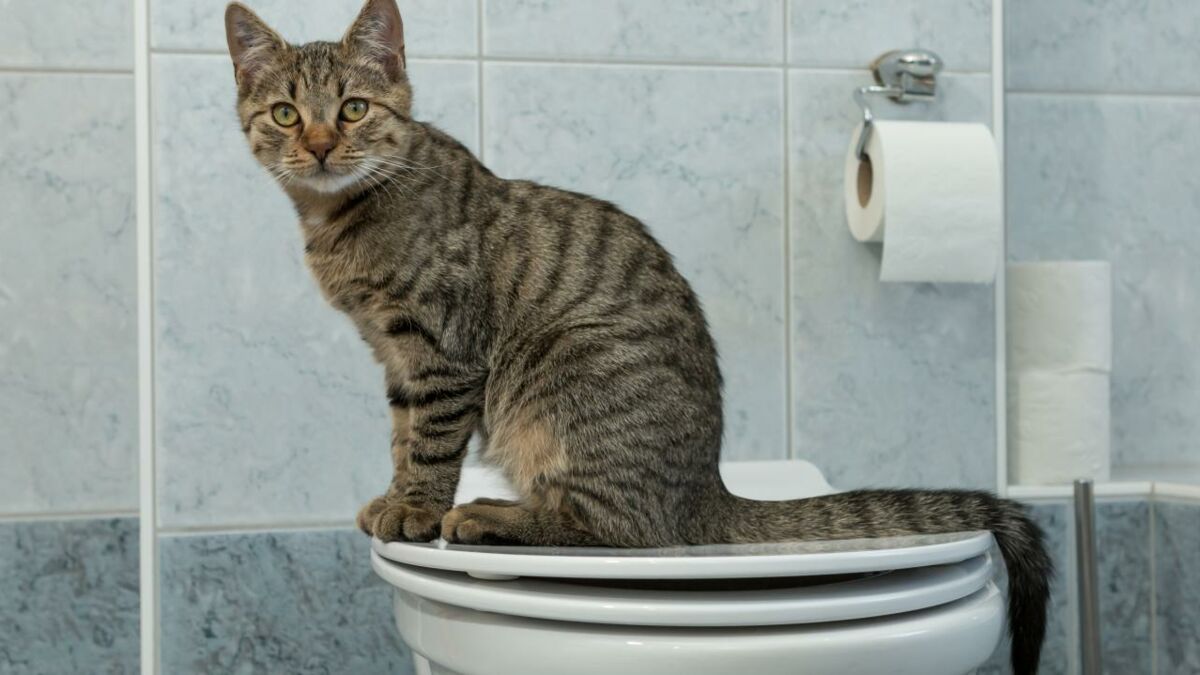Avoid Plumbing Problems: Don't Flush Cat Poop Down Your Toilet - Expert Advice
Avoid Plumbing Problems: Don't Flush Cat Poop Down Your Toilet - Expert Advice
Blog Article
How do you feel with regards to How to Dispose of Cat Poop and Litter Without Plastic Bags?

Introduction
As pet cat owners, it's vital to bear in mind how we take care of our feline friends' waste. While it may appear hassle-free to flush feline poop down the bathroom, this practice can have destructive consequences for both the setting and human wellness.
Alternatives to Flushing
Fortunately, there are more secure and extra liable methods to throw away cat poop. Take into consideration the following alternatives:
1. Scoop and Dispose in Trash
One of the most typical method of throwing away feline poop is to scoop it into a naturally degradable bag and throw it in the garbage. Be sure to utilize a committed litter inside story and take care of the waste without delay.
2. Use Biodegradable Litter
Go with naturally degradable pet cat clutter made from products such as corn or wheat. These litters are environmentally friendly and can be securely dealt with in the garbage.
3. Hide in the Yard
If you have a backyard, think about hiding pet cat waste in an assigned location away from veggie gardens and water resources. Make certain to dig deep sufficient to prevent contamination of groundwater.
4. Set Up a Pet Waste Disposal System
Buy an animal waste disposal system specifically made for feline waste. These systems utilize enzymes to break down the waste, reducing smell and ecological influence.
Health Risks
In addition to environmental worries, purging cat waste can likewise position health threats to humans. Cat feces may contain Toxoplasma gondii, a bloodsucker that can trigger toxoplasmosis-- a possibly extreme ailment, especially for expectant women and people with damaged immune systems.
Ecological Impact
Purging pet cat poop introduces unsafe virus and bloodsuckers right into the water, posing a significant threat to marine ecosystems. These contaminants can negatively influence aquatic life and compromise water quality.
Final thought
Responsible family pet possession extends beyond offering food and shelter-- it additionally includes proper waste monitoring. By avoiding purging feline poop down the commode and choosing alternative disposal techniques, we can minimize our ecological footprint and protect human wellness.
Why Can’t I Flush Cat Poop?
It Spreads a Parasite
Cats are frequently infected with a parasite called toxoplasma gondii. The parasite causes an infection called toxoplasmosis. It is usually harmless to cats. The parasite only uses cat poop as a host for its eggs. Otherwise, the cat’s immune system usually keeps the infection at low enough levels to maintain its own health. But it does not stop the develop of eggs. These eggs are tiny and surprisingly tough. They may survive for a year before they begin to grow. But that’s the problem.
Our wastewater system is not designed to deal with toxoplasmosis eggs. Instead, most eggs will flush from your toilet into sewers and wastewater management plants. After the sewage is treated for many other harmful things in it, it is typically released into local rivers, lakes, or oceans. Here, the toxoplasmosis eggs can find new hosts, including starfish, crabs, otters, and many other wildlife. For many, this is a significant risk to their health. Toxoplasmosis can also end up infecting water sources that are important for agriculture, which means our deer, pigs, and sheep can get infected too.
Is There Risk to Humans?
There can be a risk to human life from flushing cat poop down the toilet. If you do so, the parasites from your cat’s poop can end up in shellfish, game animals, or livestock. If this meat is then served raw or undercooked, the people who eat it can get sick.
In fact, according to the CDC, 40 million people in the United States are infected with toxoplasma gondii. They get it from exposure to infected seafood, or from some kind of cat poop contamination, like drinking from a stream that is contaminated or touching anything that has come into contact with cat poop. That includes just cleaning a cat litter box.
Most people who get infected with these parasites will not develop any symptoms. However, for pregnant women or for those with compromised immune systems, the parasite can cause severe health problems.
How to Handle Cat Poop
The best way to handle cat poop is actually to clean the box more often. The eggs that the parasite sheds will not become active until one to five days after the cat poops. That means that if you clean daily, you’re much less likely to come into direct contact with infectious eggs.
That said, always dispose of cat poop in the garbage and not down the toilet. Wash your hands before and after you clean the litter box, and bring the bag of poop right outside to your garbage bins.
https://trenchlesssolutionsusa.com/why-cant-i-flush-cat-poop/

I recently found that piece on Don’t flush cat feces down the toilet when surfing around the web. If you enjoyed reading our blog entry plz be sure to share it. Bless you for your time. Kindly check up our website back soon.
Call Today Report this page